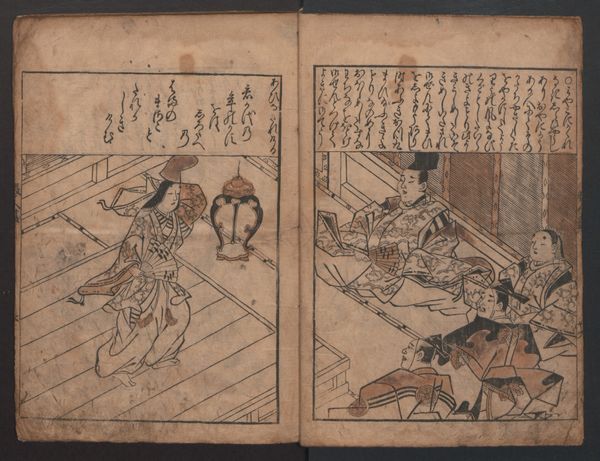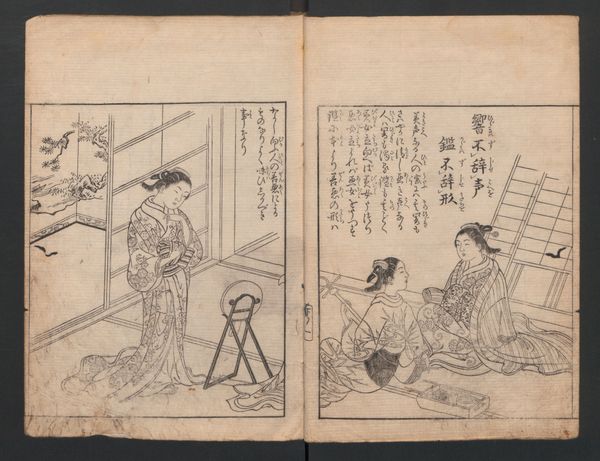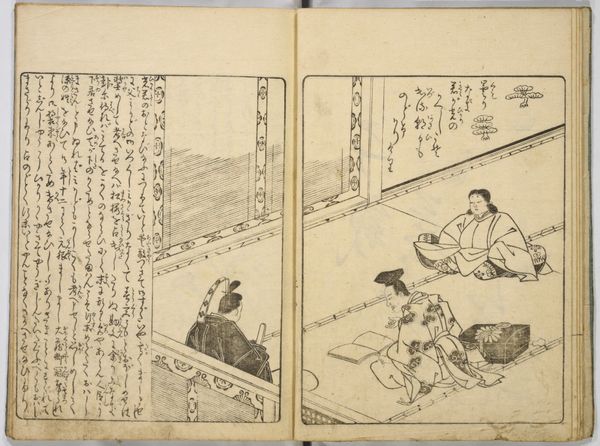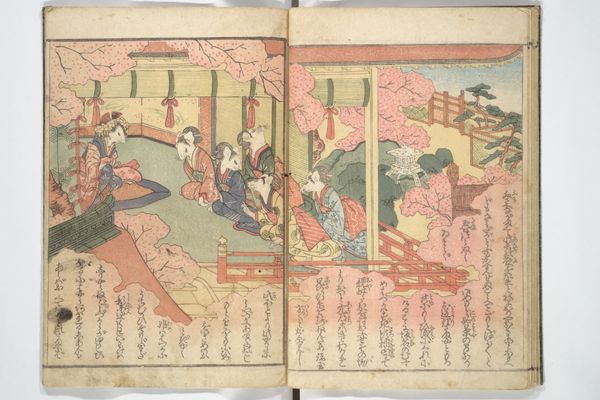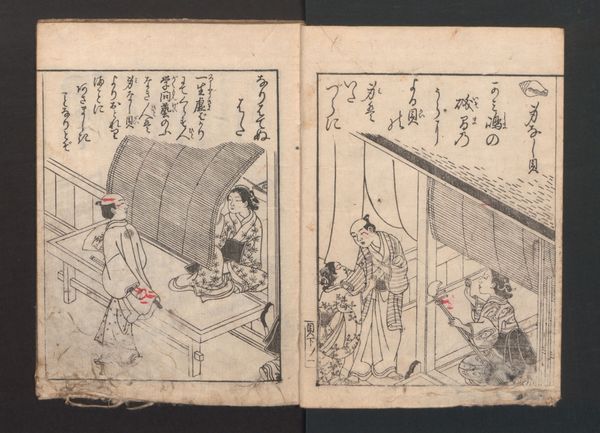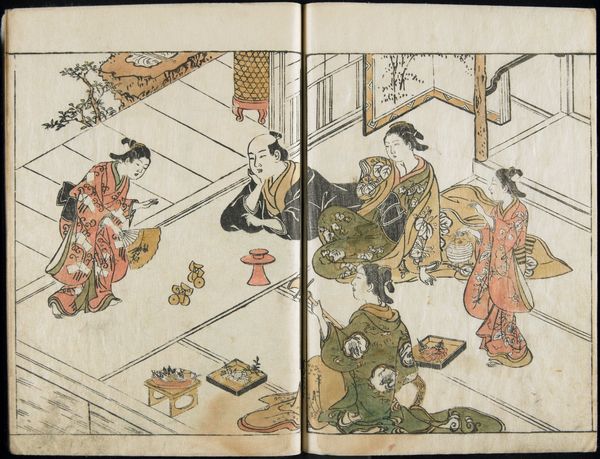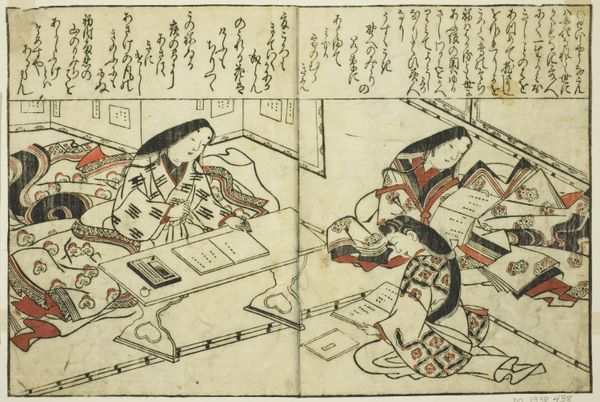
Picture Book- Field of Vines Possibly 1736
0:00
0:00
drawing, print, ink
#
drawing
#
pen drawing
# print
#
book
#
asian-art
#
sketch book
#
ukiyo-e
#
ink
#
genre-painting
Dimensions: 1/8 x 6 1/8 x 8 9/16 in. (0.3 x 15.6 x 21.7 cm)
Copyright: Public Domain
Curator: Nishikawa Sukenobu’s “Picture Book- Field of Vines,” possibly from 1736. It's a double-page print using ink drawing to portray domestic life within a structured interior. Editor: The composition creates an immediate feeling of stillness. The delicate line work and muted palette evoke a quiet, almost reverent mood. It seems intensely private. Curator: Consider the social function of these images. Sukenobu’s work circulated widely, offering glimpses into elite life for a broader audience. Note the attention paid to the garments, rendered with exquisite detail, which surely signified social standing and refined taste. Editor: Exactly, we're looking at the performance of status made possible through very particular commodities, painstakingly reproduced through printing technology. These prints allowed for the commodification and circulation of a specific vision of Japanese culture, not just aesthetically, but ideologically. What type of labor enabled this artwork, for example? What social norms regarding dress and domestic interaction are reflected? Curator: We must not disregard the aesthetic language present here. The arrangement of figures and objects forms a complex visual rhyme. Note the repeated use of rectangular forms, and the subtle diagonal lines that direct the viewer's gaze across the scene, all anchored by a precisely calculated asymmetry. The textual inscriptions play a crucial compositional role as well. Editor: I find myself questioning how that carefully constructed asymmetry served broader political agendas. Were they merely reflective of actual domestic settings, or did they suggest specific ways of behaving, consuming, and understanding gender roles? Consider that the materiality of the print allowed for mass reproduction, distributing these lifestyle ideals. Curator: In that sense, you are right to question the material conditions behind it and the labor necessary to realize it. Still, it's essential to appreciate the complex arrangement of visual elements and their effect. It is a balanced synthesis of form and content, tradition and innovation. Editor: Indeed. Perhaps in considering both the visual strategies and the materiality behind its production we gain the richest understanding of this beautiful example of ukiyo-e printmaking.
Comments
No comments
Be the first to comment and join the conversation on the ultimate creative platform.
